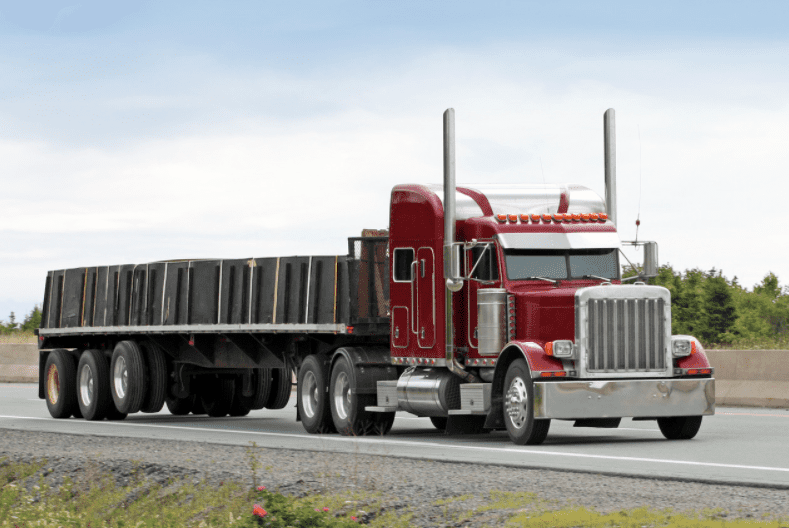Trucking is a business that can be successful for anyone who has some dedication and a bit of luck. Start with the idea of trucking and build from there. There are several things you need to get started, but the most important thing is to have a good truck and driver. You’ll have less trouble making your truck profitable if you can have good drivers. Additionally, you’ll need to be able to make your vehicle run on fuel and have enough storage to keep your cargo long-term. This article will go in step by step and tell you how to start a trucking business.
What are the essentials of a successful trucking business?
The essentials of a successful trucking business include an excellent truck, sound drivers, and plenty of storage. You’ll also need a solid marketing strategy to get your company discovered by the proper people. There are a lot of different strategies you can use to get started, but one of the most important things is getting your business online. This will help you build an audience and connect with potential customers more personally.
Benefits of starting a trucking business?
- You can save money. When you’re self-employed, you don’t have to pay the regular fees that come with a company job.
- You can be your boss. As a self-employed trucker, you can do whatever you want with your business. You can set your hours, make your own decisions about marketing and business strategy, and even set your prices for your services. This means that you can set your business up in a way that works best for you and your family.
- Trucking is an entrepreneurial industry. You can start your own trucking business and be successful right away. You’ll also be able to charge more because you’ll be able to provide a better product and service.
How to start a trucking business? Step by Step Guide:
You need to take a few different steps to start your own trucking business. The first step is to decide which track you want to start with. There are a few different types of trucks, but the most popular ones are the flatbed truck and the semi-truck. Next, you need to find a driver. You can find drivers online or through word-of-mouth. If you’re starting, it’s also a good idea to find a trucking company that can help you get started. Finally, you need to set up your business. This will include :
Step 1: Get started with trucking by finding a good truck.
The first step in trucking is finding a good truck and driver. You can find a lot of trucks and drivers on the internet. However, make sure you’re comparing apples to apples. Don’t simply compare rates compare the car, driver, and cargo quality. You should know a few things if you want to start your own trucking company. You first need to decide what type of truck you want to begin with. There are a few different types of trucks, but the most popular ones are the flatbed truck and the semi-truck. The flatbed truck is an excellent choice for people just starting. It’s easy to set up and use, and it can carry a lot of cargo. The semi-truck is more advanced than the flatbed truck, but it’s not as easy to set up or use. It’s better for larger shipments or for carrying goods on long trips.
What is a flatbed truck?

A flatbed truck is a vehicle with a single axle designed to transport goods. This means that it can carry a lot of cargo, and it’s easy to set up and use. Flatbed trucks are most popular in the United States, but they’re also available in other countries.
How do flatbed trucks work?
Flatbed trucks work the same way as regular cars. You put your cargo in the vehicle and push it along. The truck drives itself, so you don’t have to fumble with the controls. The flatbed truck is the most popular type of truck, and it’s great for carrying a lot of cargo.
What can you transport with a flatbed truck?
A flatbed truck can carry a lot of cargo. You can fit many things on a flatbed truck, including cars, motorcycles, bicycles, and other small items. You can also carry many things on a semi-truck, but it’s not as easy to set up or use. The semi-truck is better for larger shipments or taking goods on long trips.
How much cargo can a flatbed truck carry?
A flatbed truck is capable of transporting a large amount of material. A basic flatbed truck has a cargo capacity of 4,500 pounds. A semi-truck is capable of transporting up to 8,500 pounds of freight.
What are the different types of flatbed trucks?
There are a few different types of flatbed trucks. The most popular type is the flatbed truck. The use of this truck for carrying a lot of cargo is easy to set up and use. Another type of flatbed truck is the semi-truck. This truck is more advanced than the flatbed truck, but it’s not easy to set up or use. It’s better for larger shipments or for carrying goods on long trips.
Step 2: Appoint authorized drivers
You may take a few steps to safeguard your commercial transportation company from potential risks.
First and foremost, you should appoint an authorized driver for the company- someone with a clean background and driving record who is well-trained in security, cargo handling, and other areas related to road safety.
Secondly, make sure that all of your employees are licensed drivers with valid driver’s licenses.
In addition, always use safe transport methods when transporting goods or passengers; ensure securing vehicles properly against theft or vandalism, and keep records of all traffic stops made by your drivers so that you can document this information accurately.
Step 3: Licensing and certification
Trucking companies will require various licenses and certifications before they can open their doors. You’ll need to obtain licenses and certifications, including:
Step 4: Types of equipment
A new trucking company’s management team must decide which option for procuring and maintaining equipment is appropriate for the company’s operational and financial demands. The team must decide whether to buy or lease equipment. Purchase of fuel, maintenance, accidents, and emergency breakdowns require developing policies and procedures. Older trucks are often not covered by insurance carriers. They impose other restrictions on drivers (such as driver training requirements) and potential riders they may request to accompany them on the road. Some companies that own trucks choose to lease their equipment with larger trucking companies, which place age restrictions on the equipment; likewise, many insurance companies will not provide coverage for older trucks. They impose other limits on drivers (such as driver training requirements).
Step 5: Financing the business
If you’re looking for financial assistance on how to start a trucking business, commercial banks can be a helpful resource. However, you may want to consider renting vehicles instead of purchasing them if you don’t have enough money to buy a truck outright. Another option is finding a partner with the necessary expertise and security to help fund the startup of your trucking business- this could entail sharing deposits for the vehicle startup.
Step 6: Advertising the business
Starting a business is a tough challenge. It requires the dedication and hard work of many people, including you. One way to support your business is to advertise it locally: maintaining a startup company is challenging. Get listed in the local newspaper, buy ad space in the community tabloids, or advertise with transport brokers. Approaching transport brokers can also be one path from where you can seek contracts.
Conclusion
This article is for you if you’re thinking about how to start a trucking business. In this article, you will look at all of the components of starting a trucking company, and this guide will help to achieve success in your business.



